There’s a growing crop of Japanese food lovers in Taipei gravitating towards more leisurely establishments and open-air sake bars. But devoted connoisseurs have been holding fort at Mitsui Cuisine M (三井 Cuisine M), the newest branch of the Mitsui Food and Beverage Enterprise Group located in the heart of posh Xinyi District (信義).
Hidden in a discreet back corner off Songzhi Road in the Citibank building opposite Eslite bookstore, Mitsui Cuisine M combines aesthetics with the freshest quality seafood. The decor includes floor-to-ceiling windows, high walls and an impressive wine display. Chandeliers made out of dangling forks which resemble aquatic life add a quirky touch to the otherwise classy ambiance.
While lunch sets are either NT$1,200 or NT$1,500, the dinner sets are pricier at NT$1,800, NT$2,800 and NT$3,800. Waiters, or “advisers” as they are called, are more than happy to introduce the dishes on the set menu which may vary according to the ingredients in stock on the day.
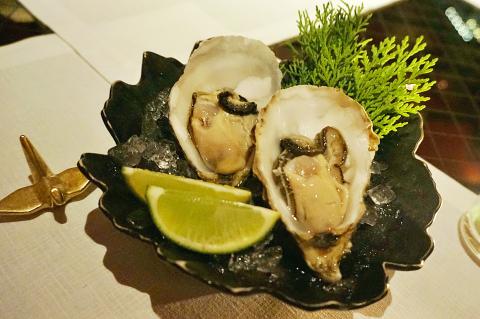
Photo: Dana Ter
The NT$2,800 set consisting of a nine-course meal is a fine choice. Regardless of which set you choose, though, presentation is paramount and each dish is the making of a meticulous artist. Taste-wise, garnishing and sauces are used to enhance the natural freshness of the food rather than overpower it.
There’s a saying that an Italian restaurant can be judged by the quality of its bread. The same can be said for oysters in a seafood restaurant. The bigger the oyster the greater the risk of it tasting too rubbery. Mitsui’s oysters, although big, are silky and delicate. Served on a shell-shaped plate filled with small chunks of ice, it gives the impression of being fresh from the ocean.
Alternating between raw and cooked, cold and hot, the rest of the set follows the “fresh from the ocean” theme. Contrasting flavors are a key motif in the food at Mitsui Cuisine M. Served in an earthenware plate, the second course, which is steamed fish soaked in warm broth is lightly drizzled with shreds of lobster meat and scallion bits. The natural sweetness of the lobster and tinge of onion flavor from the scallions provides a nice contrast to the smooth, velvety textures of the fish.
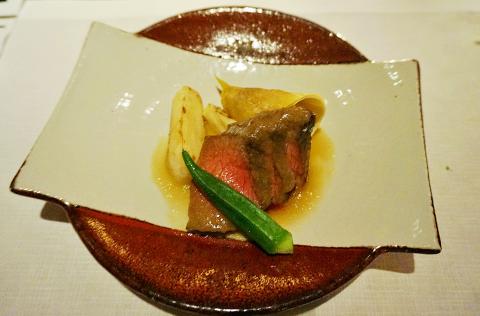
Photo: Dana Ter
The black abalone, a rarity in itself, is cut into slices that are fine and succulent, pairing well with the chilled sliced apple, lettuce and asparagus. By contrast, the seared scallop fresh from the pan is warm, firm and cod-like. The dollop of green tartar-like sauce adds a sultry feel.
Next up is the dish that the Mitsui group is most famous for — its assorted sashimi platter.
The presentation takes into consideration colors, contours, background and foreground, while the sashimi, moist and glistening, beckons one’s taste buds. Biting into it, the taste is light and heavenly — a perfect combination given the sweltering heat outside, even at night.
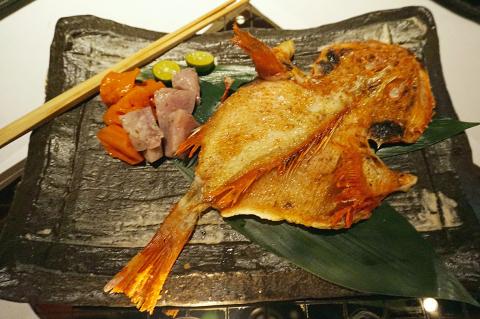
Photo: Dana Ter
After several courses of raw delicacies, it’s fitting that the remainder of the dishes are cooked. Encased in an earthenware bowl decorated with inedible leaves, the crab looks like it’s attempting to crawl out of its habitat. The soft delicateness of the crab meat is best savored with the ginkgo nuts sprinkled in the bowl.
The last two courses before dessert — grilled red throat emperor and sliced beef — should fill you up. The grilled fish which is more of an orange hue, is crispy on the outside and juicy on the inside. Meanwhile, the medium-rare beef served in light gravy sauce adorned with lady’s finger is just the right amount of softness and chewiness.
The interplay between sight, taste and touch makes the dining experience at Mitsui Cuisine M uniquely multi-sensory. Do not be dissuaded by the prices — being true value for your money, the food will have you believing that you are dining by the Pacific Ocean rather than in the midst of malls, night clubs and skyscrapers.
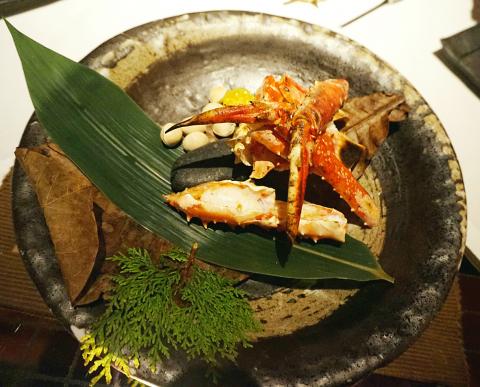
Photo: Dana Ter
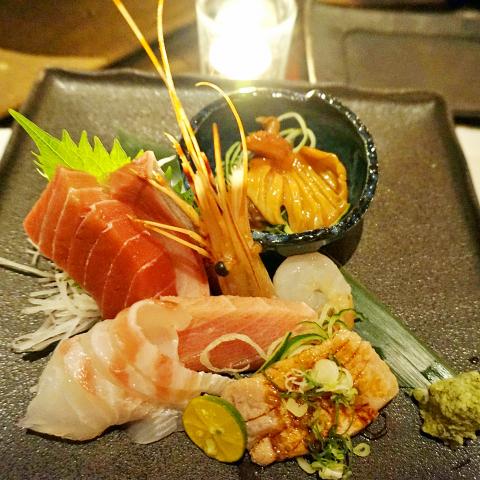
Photo: Dana Ter

The Lee (李) family migrated to Taiwan in trickles many decades ago. Born in Myanmar, they are ethnically Chinese and their first language is Yunnanese, from China’s Yunnan Province. Today, they run a cozy little restaurant in Taipei’s student stomping ground, near National Taiwan University (NTU), serving up a daily pre-selected menu that pays homage to their blended Yunnan-Burmese heritage, where lemongrass and curry leaves sit beside century egg and pickled woodear mushrooms. Wu Yun (巫雲) is more akin to a family home that has set up tables and chairs and welcomed strangers to cozy up and share a meal

Dec. 8 to Dec. 14 Chang-Lee Te-ho (張李德和) had her father’s words etched into stone as her personal motto: “Even as a woman, you should master at least one art.” She went on to excel in seven — classical poetry, lyrical poetry, calligraphy, painting, music, chess and embroidery — and was also a respected educator, charity organizer and provincial assemblywoman. Among her many monikers was “Poetry Mother” (詩媽). While her father Lee Chao-yuan’s (李昭元) phrasing reflected the social norms of the 1890s, it was relatively progressive for the time. He personally taught Chang-Lee the Chinese classics until she entered public

Last week writer Wei Lingling (魏玲靈) unloaded a remarkably conventional pro-China column in the Wall Street Journal (“From Bush’s Rebuke to Trump’s Whisper: Navigating a Geopolitical Flashpoint,” Dec 2, 2025). Wei alleged that in a phone call, US President Donald Trump advised Japanese Prime Minister Sanae Takaichi not to provoke the People’s Republic of China (PRC) over Taiwan. Wei’s claim was categorically denied by Japanese government sources. Trump’s call to Takaichi, Wei said, was just like the moment in 2003 when former US president George Bush stood next to former Chinese premier Wen Jia-bao (溫家寶) and criticized former president Chen

President William Lai (賴清德) has proposed a NT$1.25 trillion (US$40 billion) special eight-year budget that intends to bolster Taiwan’s national defense, with a “T-Dome” plan to create “an unassailable Taiwan, safeguarded by innovation and technology” as its centerpiece. This is an interesting test for the Chinese Nationalist Party (KMT), and how they handle it will likely provide some answers as to where the party currently stands. Naturally, the Lai administration and his Democratic Progressive Party (DPP) are for it, as are the Americans. The Chinese Communist Party (CCP) is not. The interests and agendas of those three are clear, but